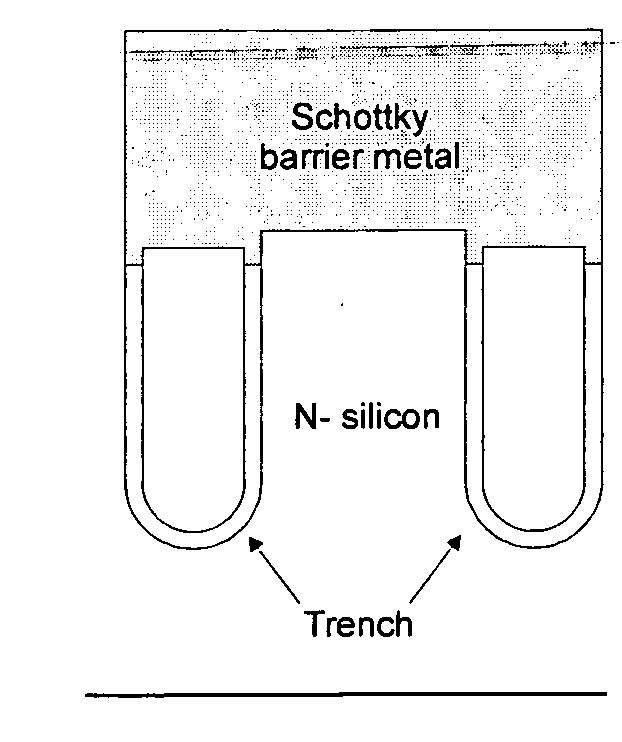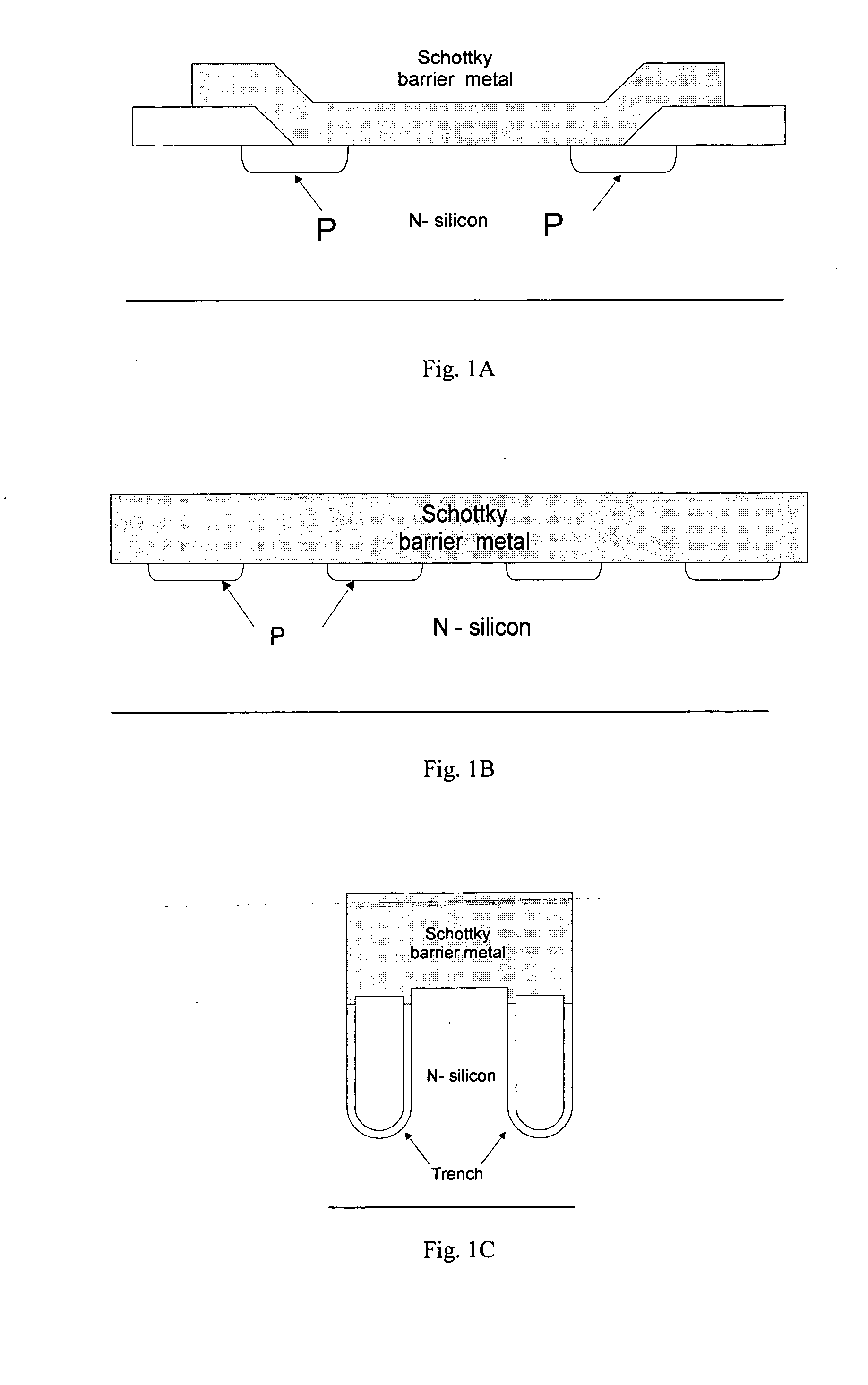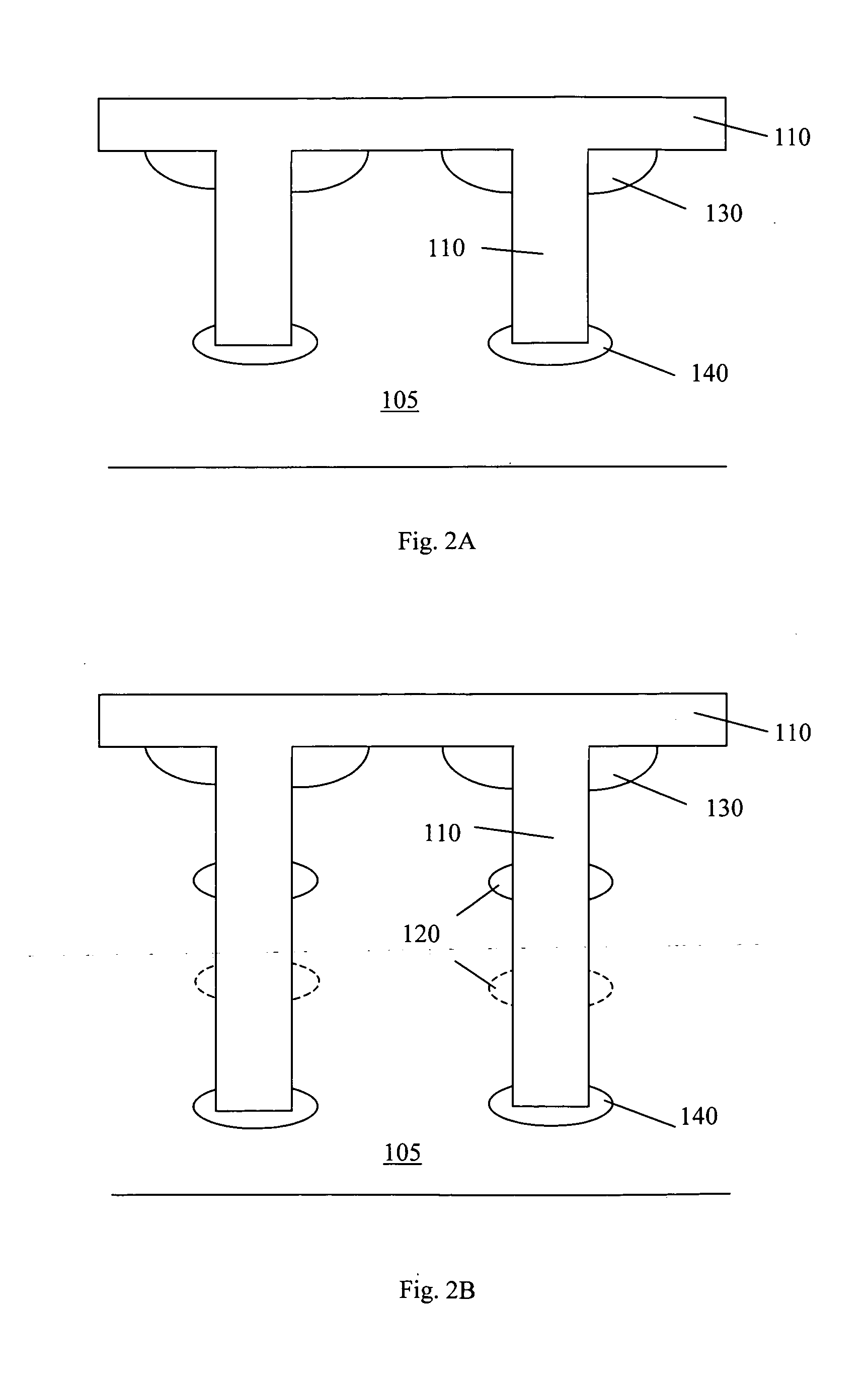Trench junction barrier controlled Schottky
a technology of tunnel junction barrier and controlled schottky, which is applied in the direction of semiconductor devices, electrical apparatus, transistors, etc., can solve the problems of increasing production costs, facing technical difficulties and limitations, and another technical difficulty, and achieves the effect of greatly improving the utilization of the silicon area
- Summary
- Abstract
- Description
- Claims
- Application Information
AI Technical Summary
Benefits of technology
Problems solved by technology
Method used
Image
Examples
Embodiment Construction
[0023] Referring to FIG. 2A for a cross sectional view of an Schottky diode 100 of this invention. The Schottky diode 100 is supported and formed in a semiconductor substrate, e.g., a N-doped silicon substrate 105. The Schottky diode 100 includes a plurality of trenches forming a plurality of semiconductor mesas. In the preferred embodiment as shown in FIG. 2A the trenches are filled with Schottky barrier metal, e.g., Ti / TiN or Tungsten metal 110. In another preferred embodiment (not shown), at least a portion of vertical surface of semiconductor mesas is lined with Schottky barrier metal. For the purpose of preventing leakage current generated by the reverse voltage, P-dopant regions 130 are formed on the mesas surrounding the top portions of the trenches and P-dopant regions 140 are formed that surrounding the bottom of the trenches.
[0024] As shown in FIG. 2A, P-dopant regions 130 are formed on the top corners of mesas without extending over the whole top surface of mesas. Schott...
PUM
 Login to View More
Login to View More Abstract
Description
Claims
Application Information
 Login to View More
Login to View More - R&D
- Intellectual Property
- Life Sciences
- Materials
- Tech Scout
- Unparalleled Data Quality
- Higher Quality Content
- 60% Fewer Hallucinations
Browse by: Latest US Patents, China's latest patents, Technical Efficacy Thesaurus, Application Domain, Technology Topic, Popular Technical Reports.
© 2025 PatSnap. All rights reserved.Legal|Privacy policy|Modern Slavery Act Transparency Statement|Sitemap|About US| Contact US: help@patsnap.com



